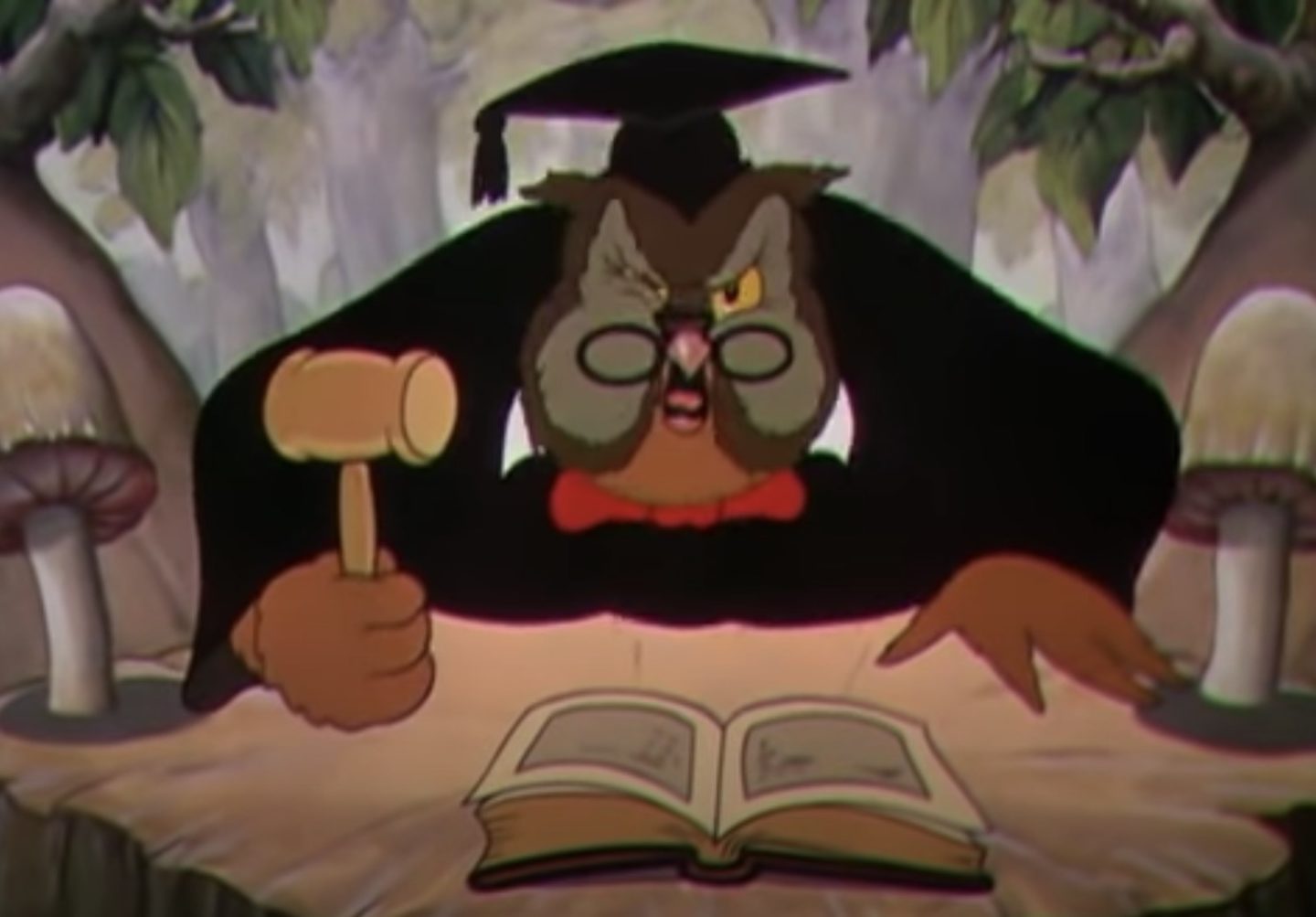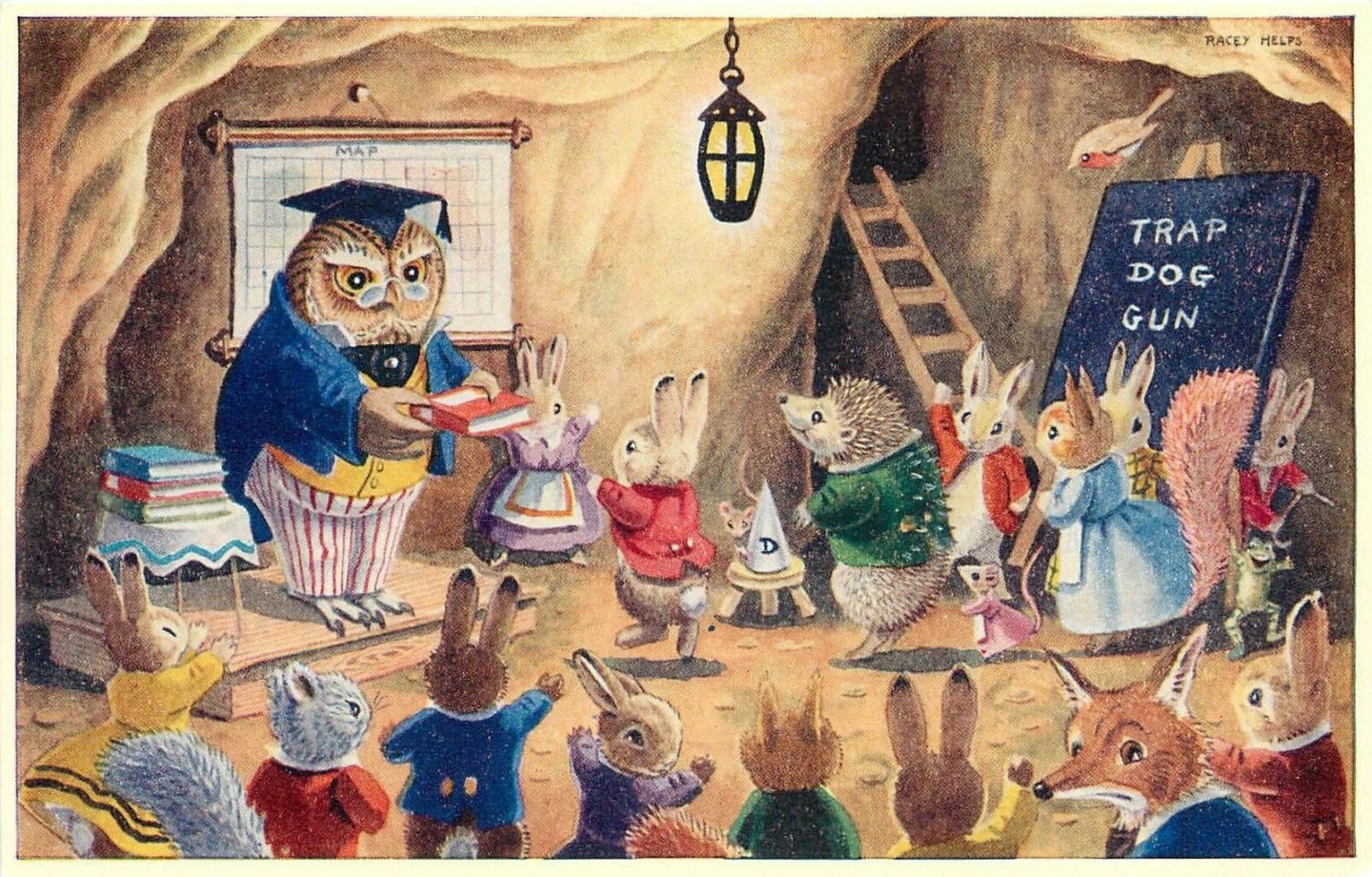Judge Owl

One in a series of posts dedicated to pop-culture depictions of owls — as stand-ins for educated, highbrow humans — from 1924–1983. The series derives its title from Owl’s home in A.A. Milne’s Winnie-the-Pooh stories.
When did owls — in folk or pop culture — begin wearing glasses and/or mortarboards, i.e., as signifiers of their status as wise, educated creatures? See, for example, the postcard below produced by the Medici Society at some unknown point in the early part of the twentieth century.

By 1935, at any rate, it wouldn’t have surprised audiences who enjoyed “Who Killed Cock Robin”, a Silly Symphonies short produced by Walt Disney and directed by David Hand, to find Judge Owl (voiced by Billy Bletcher) sporting these accoutrements. However, as far as I can tell this is the first pop-culture representation of an owl as an authoritative judge — as opposed to an authoritative teacher. Readers, please let me know if I’m wrong about this. There’s always an earlier example to be found…
[Fun fact: An extract from the cartoon was used brilliantly the following year in Alfred Hitchcock’s Sabotage. When Verloc, a saboteur, accidentally causes the death of his innocent brother-in-law, Verloc’s shocked wife wanders into the cinema they operate… where the Silly Symphonies short is playing. For a moment, she is cheered up by the spectacle… but then Cock Robin is shot with an arrow, and she is reminded forcibly of her tragic loss.]

Note that in the Donald Duck universe, there is another Judge Owl — an authoritative, punitive magistrate in Donaldville. He first appeared in a 1936 illustration, “Judge Owl on the Bench,” in the pages of Mickey Mouse Magazine. He became a recurring character as of an April 1949 Carl Barks story called “Rival Beachcombers” in which he fines Donald $5,000.00 for digging up the beach, in search of a maharajah’s lost ruby. He would go on to levy many harsh judgments against Donald, Uncle Scrooge, and others.


